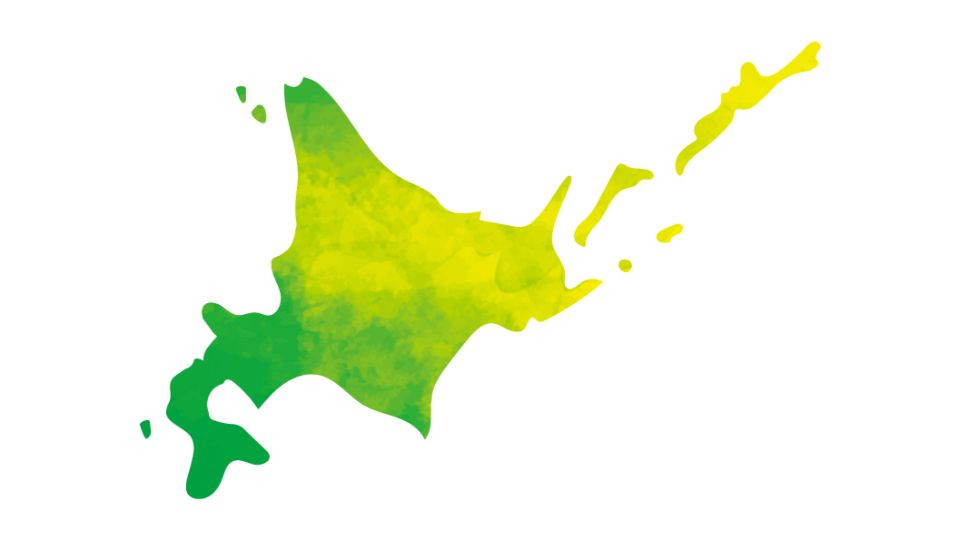Japanese castles are a beautiful blend of Japanese history and Japanese scenery. In this article, we introduce the best castles in Japan to visit for being the most famous and iconic to help you plan your itinerary.
First Published: 2022-09-16
Updated: 2023-12-19
Table of Contents
- What is “Castle” in Japanese?
- Japanese Castles in the Sengoku Period
- Classification of Japanese Castles by Topography
- Visit Japanese Castles, 12 of the Best Castles in Japan
What is “Castle” in Japanese?

Castles are called 城 (Shiro) or お城 (Oshiro) in Japanese. When saying the name of a castle, 城 is read as “-jo”. For example, Himeji Castle is 姫路城 (Himeji-jo) in Japanese.
What is 天守閣 (Tenshukaku)?
天守 (Tenshu) or 天守閣 (Tenshukaku) is the Japanese castle tower or Japanese castle keep. As the tallest tower and building on the castle grounds, it is the first thing that draws your attention when looking at Japanese castles
During Japan’s medieval period (13th-16th century CE), Japanese castles had a tall tower called a 櫓 (Yagura). The Tenshukaku is a Yagura that is built in an important part of the castle for defense and command purposes, but runs a high risk of being destroyed during war. Even so, immense wealth and manpower were used to rebuild them because they physically represented the castle owner’s power.
12 of these Tenshukaku remain today, 5 of them designated as national treasures of Japan (introduced below).
While admiring the Tenshukaku, take in the 石垣 (Ishigaki) castle walls that were carefully constructed by stacking stones. The wall serves as the foundation to build a strong castle, and is also quite beautiful to look at.
Japanese Castles in the Sengoku Period
Writer's Pick
Japanese Castles in the Sengoku Period

During the Sengoku or Warring States period, when castles were built in various parts of the country and fierce battles were waged to occupy them, there were many 籠城戦 (Koujouse) or sieges, fought with the castle gates firmly closed.
As there was nowhere to retreat during a siege, the castle’s ability to defend itself was incredibly important. There were cases where ownership of the castle was forced to be handed over, or the castle was burned while the occupants fled. But if the castle was a feudal lord’s main residence, they would not easily budge or hand it over, so they would often confine themselves within the castle as part of the defensive battle.
Castles were both a home and headquarters for feudal lords. And they would set up the Castle Towns called 城下町 (Jokamachi) in an area nearby the castle where loyal vassals, samurai, and merchants would reside. They are also often equipped with defenses against enemy attacks, so it’s a good idea to take a look around the castle as well.
Japanese Castle Classification Based on Topography

Japanese castles are usually built at strategic locations, for example by the mountains, by the sea, on hilly terrains, and on plain fields. Attack and defensive strategies and formations differ depending on the topography and terrain to best utilize the natural landscape to their advantage.
Japanese castles can be classified based on topography using the following names:
- 山城 (Yamajiro) : “Mountain Castle”; built on the mountains using the topography of the mountain ridge or peak
- 平山城 (Hirayamajiro / Hirayamajo) : “Hill Castle”, “Flatland-Mountain Castle; built on mountain flatlands or on a hilly terrain
- 平城 (Hirajiro / Hirajo) : “Castle on Plains”; built on plains
- 海城 (Umijiro) : “Seaside Castle”; built by the sea
Okinawan Castles
Castles that are built in the Okinawa region are called グスク (Gusuku) or スク (Suku). They are equivalent to お城 (Oshiro) and 城 (Shiro) respectively. The word “Gusuku” also means “Sacred Place”.
Visit Japanese Castles, 12 of the Best Castles in Japan
Without further ado, let’s take a look at the most famous and iconic Japanese castles there. Let’s start off with 5 Japanese castles that have been designated as national treasures of Japan for being original castles that survived the test of time.
1. Himeji Castle

Himeji Castle is located in Himeji City, Built in the early 17th century, during the Edo Period, Himeji Castle was designated as a National Treasure of Japan and UNESCO World Heritage Site in 1993. The castle is painted with white plaster without any added pigment, so it is also called 白鷺城 (Shirosagijo) or "White Heron Castle". When people mention the “White Castle of Japan”, this is the castle they are referring to.
Himeji Castle is the largest among the remaining Tenshukaku (castle tower) with a height of 31.5 meters and the Ishigaki (stone wall) supporting the castle tower with a height of 14.85 meters. Himeyama or Mount Hime where Himeji Castle is located has an elevation of 49.6 meters, so the total height is 92 meters above sea level. The 大天守(Daitenshu) or main Tenshukaku is a six-story structure with five visible levels (the 6th is the basement).
Read more about it here.
※Himeji Castle Office Site, “姫路城の規模”
2. Matsumoto Castle

Matsumoto Castle is located in Matsumoto City, Nagano Prefecture. A different taste than the pure white Himeji Castle, the black and white contrast of Matsumoto Castle is remarkable. Among the 12 remaining castle towers, this castle, like Himeji Castle, has 5 visible floors with a hidden 6th. Unlike other castles mostly built in the mountains or hilly terrains, it was built on a plain and is surrounded by 3 moats called 水堀 (Mizubori). You can see the Northern Japanese Alps stretch out behind it, boasting a wonderful view with the castle reflected on the water’s surface.
You can read more about Matsumoto Castle here.
※ Matsumoto Castle Official Website, “松本城の特徴”
3. Hikone Castle

Hikone Castle is located in Hikone City, Shiga Prefecture. The three-story tenshukaku has a beautiful exterior. It is lit up at night and is loved by locals as a landmark in Hikone City. The castle town of Hikone Castle is also famous for its remarkable transformation from a former wetland area to what it is now by a large-scale civil engineering project. Hikonyan, the mascot of Hikone Castle and the city itself, is one of the most popular yuru-chara (Japanese mascot) in Japan.
Read more about Hikone Castle here.
4. Inuyama Castle

Inuyama Castle is located in Inuyama City, Aichi Prefecture. It is the oldest among the 12 originally intact Japanese castles left. It is composed of 4 stories with 3 visible levels. The back of the castle faces a steep cliff that is adjective to the Kiso River. Its structure makes it difficult to attack from behind as enemies would need to cross the river, climb the steep cliff, and then climb the castle walls too. Inuyama Castle was built by Oda Nobunaga’s uncle who resided in it. It is said that Oda Nobunaga was impressed by the view from the top of the castle tower.
5. Matsue Castle

Matsue Castle is located in Matsue City, Shimane Prefecture. It is the second largest in terms of total castle grounds area after Himeji Castle, and the third tallest in height after Himeji Castle and Matsumoto Castle. It was designated a national treasure of Japan in 2015. It is a 5-story structure with 4 visible levels.
In addition to the 5 mentioned above, the following 7 castles have their original Tenshukaku (castle tower) intact:
- Hirosaki Castle in Hirosaki City, Aomori Prefecture. It is also famous for its beautiful cherry blossoms.
- Maruoka Castle in Sakai City, Fukui Prefecture
- Bitchu Matsuyama Castle in Takahashi City, Okayama Prefecture
- Kochi Castle in Kochi City, Kochi Prefecture
- Matsuyama Castle in Matsuyama City, Ehime Prefecture - It is sometimes called “Iyo Matsuyama Castle” to distinguish it from other Matsuyama Castle. "Iyo" is the old name of Ehime Prefecture.
- Uwajima Castle in Uwajima City, Ehime Prefecture
- Marugame Castle in Marugame City, Kagawa Prefecture
6. Kumamoto Castle

Kumamoto Castle was built by Kato Kiyomasa, a renowned castle architect who was also involved in the construction of Nagoya Castle. He also became lord of this castle. The castle’s many attractive qualities include its curved Ishigaki castle walls, a signature point of Kumamoto Castle. In 2016, the castle suffered great damage from the Kumamoto earthquake. Restoration works took a long time and enormous cost, but restoration of the castle tower was completed in 2021. The Tenshukaku makes up about 20% of the total restoration required, and it is expected that complete restoration of the castle will be done by 2037. Certain areas of the castle are available for special public viewing.
※Kumamoto Castle Official Website
7. Osaka Castle

In 1583, Toyotomi Hideyoshi who had been living at Himeji Castle (which he had repaired himself) moved to Osaka and spent the next 15 years building Osaka Castle. The original Osaka Castle tower was 4~5 times bigger than the current one and golden in color, but it was burned down in 1615 with the fall of the Toyotomi clan. The Tokugawa Shogunate spent 10 years rebuilding it, but it was also burned down. Although it disappeared completely once, Osaka Castle was rebuilt in its present form.
First time visiting Osaka? Our 3-Day Osaka Itinerary includes a visit to Osaka Castle on the first day.
※Special Historic Site Osaka Castle, “大阪城の歴史”
8. Nijo Castle

Nijo Castle is located in Nakakyo Ward, Kyoto City. This castle was built by Tokugawa Ieyasu, the first shogun in the Edo Period, to use when visiting Kyoto. The entire castle is designated as a National Historic Site, and the Ninomaru-goten is designated as a National Treasure of Japan. It is famous for having been designed so that the floor creaks like a 'bird chirping' to prevent assassins from breaking in.
9. Ako Castle

Ako Castle is located in Akashi, Hyogo Prefecture, which is known as the hometown of the “47 Ronin”, known and popular abroad through movies, etc. A favorite of many history fans, it has been designated as a National Historic Site.
10. Edo Castle

Edo Castle, designated as a National Important Cultural Property and a Special Historic Site, is located in Chiyoda Ward, Tokyo. The current Imperial Palace, aka 皇居 (Kokyo) is located here.
“Shita-machi” and “Yamanote” are widely used as regional divisions in Tokyo, centered around the Edo Castle. The officials of the shogun, merchants and tradesmen lived close to the castle, developing its surrounding areas.
11. Shuri Castle

Shuri Castle is located in Naha City, Okinawa, representing the history of the Ryukyu Kingdom that existed for 450 years from 1429 to 1879. It was also the center of politics, diplomacy, and culture of the Ryukyu Kingdom, which actively interacted with China, Japan, and Southeast Asia. In 2000, it was registered as a UNESCO World Heritage Site as "Gusuku and Related Heritage Groups of the Ryukyu Kingdom".
In October 2019, a fire burned down nine facilities, including the main palace. Construction of the main body of the palace is to begin in 2022, and restoration is planned for completion in 2026.
※Shuri Castle Park
12. Takeda Castle Ruins

There are many Japanese castle ruins and castle towers in Japan that have beautiful scenery. One of them is the Takeda Castle Ruins in Asago City, Hyogo Prefecture. It is a fortress built on the top of a mountain at an altitude of 353.7 meters. The Ishigaki fortress wall that remains fully intact is one of the most impressive in the entire country.
It is beautiful all year round, but in autumn, a sea of clouds spread out under the castle, and you can enjoy the scenery befitting the nickname “Castle in the Sky”.
※Takeda Castle Ruins
To Close

You can see Japanese castles all over the country. There are castles that remain in the form they were built at the time they were built, but there are many castles that have disappeared in history and have changed their shape as they are rebuilt. Even if you are not familiar with Japanese history, you can enjoy the various castles with this basic knowledge about them!

































